The Best RTX 2070 Models To Get in 2022
Updated: April 08,2022
Picking a GPU these days is not as simple as picking a card name and running with it. Sure, you could do that, but you’d be surprised to learn how much of a difference various aftermarket designs have on both the thermal and raw processing performance of your card. After all, everyone wants to squeeze that last frame out of their rigs without blowing them up. With that in mind, we’ve done the research on some of the best RTX 2070 models around so that you don’t have to. So sit back in your comfy gaming chair and read on to find out what’s the best GPU for you.
Asus ROG Strix RTX 2070 Gaming OC
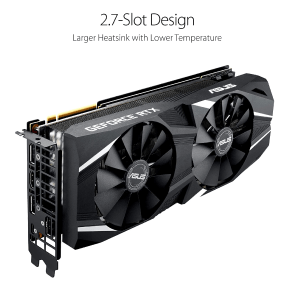


- Great performance
- Quiet
- Low temperatures
- Very expensive
Asus is one of the world’s largest and most renowned PC hardware manufacturers so it comes as no surprise that its ROG Strix RTX 2070 Gaming OC is the best 2070 card we’ve reviewed. The Republic of Gamers series of hardware products debuted back in 2006 and has since represented a benchmark for high-end PC components, especially in the GPU department. This has always translated into eye-watering prices, and the 2070 model is no exception.
Let’s start with the specs. The first thing you’ll notice about the card is its size and weight. At around 1.2 kilograms, it’s 300 grams heavier than the Founders Edition models. At nearly 12 inches (30 cm) in total length, it’s a fair bit longer as well. It’s clearly not the best 2070 if you have a smaller case, taking up three expansion slots all by itself. This is mostly due to the tall PCB and three 90-mm fans, although the card also features a sturdy backplate with the ROG logo. Just like some of the RTX 2080s we’ve reviewed, this piece of hardware from Asus is on the heavier side.
According to Asus, power consumption is between 200 W and 299 W, with a recommended PSU of at least 550 W to be on the safe side. In practice, the most powerful 2070 made by Asus usually doesn’t go beyond 220 W under standard gaming conditions.
Thankfully, it’s not all for nothing. This is one of the highest factory-overclocked 2070 models around, coming in at 1,815 MHz in full boost mode, a 100+ clock boost over the 1,710 MHz Founders Edition card. Despite that, it doesn’t go above 136.4℉ (58℃), even in the direst scenarios. The card is designed to run quietly and at low temperatures, and it’s definitely the best performing RTX 2070 of the bunch in this regard.
Unfortunately, despite the chunky hardware and phenomenal thermals, like most 2070s, the Asus model simply isn’t a good overclocker. The automated Silent, Gaming, and OC profiles do a good enough job, with the latter helping the ROG card edge past most competitors. With manual overclocking, you’re capped at around +100-150 MHz, which translates to about 2 fps at best.
Thankfully, the card is a heavy-hitter out of the box, outperforming the Founders Edition and most other models anywhere between one and 10 frames per second, depending on the game and resolution. Remember, these are some of the best GeForce RTX 2070 cards around and are ideal for 1440p gaming. They can also handle a lot of titles at 4K with RTX off and DLSS on and are overkill for 1080p gaming unless you crank up the ray tracing.
Finally, let’s talk about price and availability. At $630 on launch day, this was the most expensive GeForce GPU within the 2070 range. Since then, Nvidia’s new Ampere and AMD’s RDNA architecture have significantly reduced the prices of the Turing architecture, but the current GPU shortage reversed that trend. In our opinion, although a bit overpriced, this is still a great card if you’re able to get it at the prepandemic RTX 2070 prices. It just isn’t easy to do so.
Gigabyte Aorus RTX 2070 Xtreme
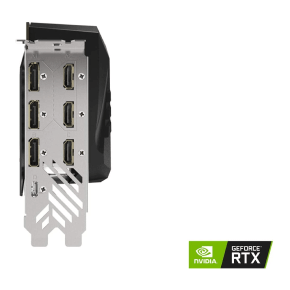

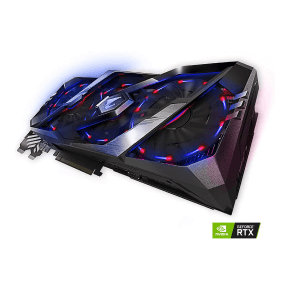
- Most powerful 2070 model
- Excellent cooling solution
- Impressive RGB lighting design
- Large and heavy card
Another take on the 2070 graphics card comes from Gigabyte Technology, a titan in the world of PC hardware. Although best known for making excellent motherboards, the company has been getting a lot of praise in recent years for their high-end graphics cards and other enthusiast hardware under the Aorus brand.
As with its main 2070 Asus and MSI rivals, the Aorus Xtreme’s sheer size lives up to its name. It’s the chunkiest model on our list with the following dimensions: 11.42 x 5.29 x 2.36 inches. Again, definitely not the best RTX 2070 version to put into a smaller case, as it easily takes up three expansion slots by itself.
In terms of power draw, the TDP is rated at 175 W, and Gigabyte claims a 450 W PSU will do the trick. In reality, the card is more power-hungry than even the Asus ROG model, easily reaching up to 230 W under full gaming load. In return, however, you not only get 14,142 MHz out of the box, but the card also OC’s slightly better than its Asus rival.
Despite the base performance being roughly on par with the other aftermarket GeForce graphics cards, the slightly higher OC headroom makes this model the best RTX 2070 in terms of raw performance, if only just. Remember, any given GPU benchmark depends on a number of factors, and some models within the same card series can vary by a few frames. Still, when it comes to dedicated performance, Gigabyte definitely has the card to beat. Just like other Turing Nvidia graphics cards, there’s a cap on how much performance you can squeeze out, but if you like playing with RTX on, you’ll appreciate every fps you can get.
While not quite the cooling monster as the Asus card, Aorus Xtreme can hold its own. The chunky PCB together with the triple 100-mm fans in stacked design handle heat admirably, even under extreme stress. The card does go up to 158℉ (70℃) at times, but as with other top RTX 2070 models, it mostly runs around 150℉ during gaming.
In terms of pricing, we’ll repeat ourselves a lot during these reviews, but the current GPU market is just not a great one for buying a card. Back on release day, the Aorus Xtreme was $10 cheaper than the Asus model, sitting near the top of the pack at $620. The price has since dropped and shot up again, with some scalpers selling it for even higher than the original price three years ago.
This 2070 GPU model is one of the costliest at the moment. This is justified, in our opinion, by its stellar gaming and thermal performance, but your mileage may vary.
MSI Gaming Z RTX 2070

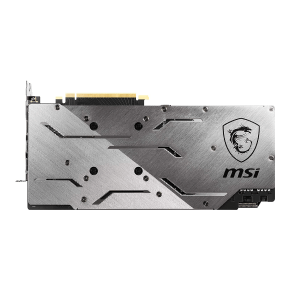
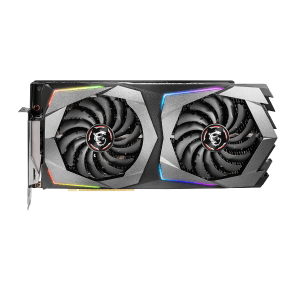
- Excellent performance
- Two fan solution that is quieter and cooler than a lot of three-fan setups
- Backplate included
- Very bulky
Any serious discussion about the best RTX 2070 graphics card is pointless without an MSI model. Put simply, the Taiwanese hardware giant Micro-Star International has been in the PC hardware game for just as long as Asus and Gigabyte and offers an impressive lineup of both budget and enthusiast-level gaming products. The Gaming series graphics cards are well known for their ingenious two-fan cooling solution and strong performance, with the 2070 Gaming Z model proudly continuing that tradition.
Unfortunately, it also follows in the footsteps of its predecessors when it comes to dimensions. While not as tall as the Asus or as chunky as the Gigabyte model, MSI’s best RTX 2070 card is the widest 2070 we’ve tested at 5.51 inches. This triple-slot monster is yet another card that doesn’t tailor to smaller gaming setups, but then again, high-end graphics cards rarely do.
Its patented dual-fan setup is the star of the show, but the robust PCB also plays a part in keeping the card cool. The smart design that MSI has been utilizing for years allows them to push the card to a record-high 1,830 MHz factory overclock, a good 120 MHz above the Founders Edition model.
As with the best aftermarket RTX 2070 models, that sort of performance doesn’t come without requiring some serious juice. MSI rates its card at a hefty 225 W, recommending a 550 W power supply for the best results. In the most stressful of FurMark torture tests, the card will draw up to 250 W, but under standard gaming scenarios, it should hover between 215 W and 225 W most of the time.
Additionally, the two giant fans ensure one of the quietest performances in a high-end graphics card - it’s practically silent until it hits 140°F. MSI already has the best 2070 RTX GPU when it comes to the factory overclock, but this can be extended to over 2,000 MHz for both memory and core clocks. This gives Gaming Z an edge over much of the competition and makes it the most powerful GDDR6 model around, along with Gigabyte’s Aorus Xtreme.
Finally, let’s look at the price. At launch, these cards were priced to compete with the inferior Founders Edition models, starting off at $600. These days, they’re cheaper than the Asus and Gigabyte models while offering similar performance. They won’t beat Asus when it comes to cooling or Gigabyte on max fps, but they come pretty close while costing slightly less. Still, if buying the best 2070 card puts a strain on your budget, finding a good RTX 2060 GPU may be preferable.
Evga RTX 2070 XC
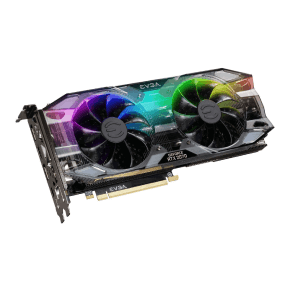

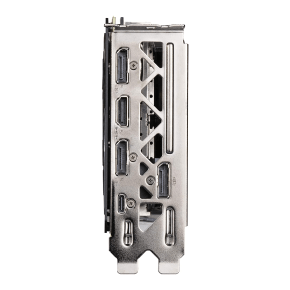
- Good thermals and slim design
- More affordable than the competition
- Three-year warranty and great customer support
- Not the most powerful 2070 around
Evga is increasingly seen as the best RTX 2070 you can get for your money. A rare American company in the world of Chinese-dominated PC hardware manufacturers, Evga is also one of the newer players on our list, having been around since 1999. The company is best known for its excellent enthusiast and mid-range graphics cards and power supplies. The 2070 XC is continuing that trend, offering a more affordable, cooler, and faster version of Nvidia’s graphics card.
If you’re focused on dimensions while examining our best-rated RTX 2070 lineup, you’ll be pleased to know that Evga is smaller than its Asus, Gigabyte, and MSI counterparts. Measuring at 10.62 x 4.38 x 1.5 inches, this is a double-slot card able to fit into smaller cases than most of its aftermarket competitors. It’s significantly shorter and slimmer than the offerings from Asus, Gigabyte, and MSI. The diminutive ITX-friendly model from Zotac is the only smaller option.
Like the MSI card, it has two fans, although these are far smaller than those found on the Gaming X. Evga might have the best RTX 2070 model around when it comes to efficiency, hardly reaching 200 W under the most demanding circumstances. The card’s dual-fan design and chunky PCB have no trouble keeping it well under 140°F while working quietly most of the time.
In fact, just like the MSI card, the fans won’t even start spinning until a certain temperature is reached - in this case, that’s 131°F. As a result, this is one of the quieter Nvidia GeForce cards on the market, which is impressive considering the dual fans here aren’t nearly as bulky as those found on the MSI Gaming X.
Unfortunately, the out-of-the-box performance is behind the best RTX 2070 models, lagging a couple of frames behind the Asus, Gigabyte, and MSI cards due to its modest 1,710 MHz factory overclock. Just like those cards, you have headroom for about 100 more MHz on the core clock and memory, putting the max OC performance around the factory-OC levels of the Asus, Gigabyte, and MSI offerings. Not bad for a card $50 cheaper than the Founders Edition models.
Speaking of the price, this is really Evga’s main selling point. Although it’s difficult to predict how much the card will cost these days, the launch-day manufacturer’s suggested retail price of $550 makes it significantly cheaper than the Founders Edition. In other words, this may be the best budget 2070 card. Bear in mind that while they are slightly faster, competitors from MSI, Gigabyte, and Asus were up to $80 more expensive at launch.
Zotac RTX 2070 Mini
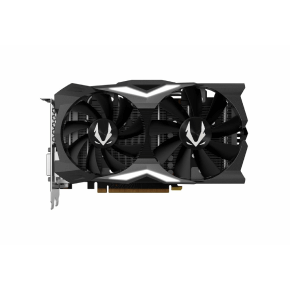
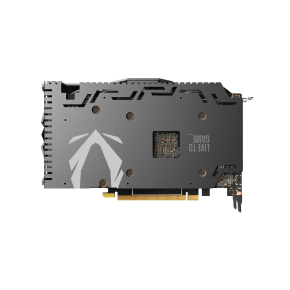
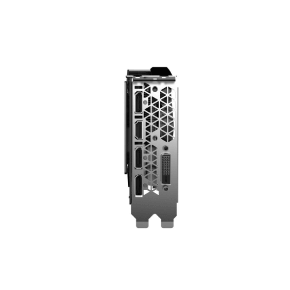
- Competitively priced
- Ideal for smaller cases
- Solid performance for a tiny card
- No USB-C port, not a real powerhouse for gaming
Finding the best 2070 graphics card for a compact PC setup these days isn’t as hard as you’d expect. Hong Kong-based Zotac is one of the newer manufacturers of high-end PC components on the market, and its RTX 2070 Mini might be exactly what you need for your small gaming rig setup. Focusing on mini PCs and powerful GeForce graphics card designs, the company has managed to gain a large following in a very short time, primarily thanks to the brilliant design and performance of their AMP series cards. While our lineup includes some of the best RTX 2070 models around, this particular review focuses on the 2070 Mini, an excellent ITX form factor card.
As you can probably guess from the name, this is the smallest card we’ve looked at thus far, measuring only 8.3 inches in length. It’s slightly chunkier than Evga’s model but still fits easily into just about any computer case you can think of. It features a dual-fan setup with 90-mm and 100-mm fans and comes with a single eight-pin connector, three Display ports, and an HDMI port. Instead of a USB-C port (as found on most GeForce RTX 2070 models), we get a somewhat antiquated DVI port, making the card easily compatible with older monitors.
Obviously, this RTX 2070 is the best buy primarily for those who value the real estate in their case above anything else. It comes with a 1,620 MHz boost clock, which is a good 90 MHz below the Founders Edition card and as much as 210 MHz beyond MSI Gaming X’s fantastic 1,830 MHz factory overclock. That being said, the card performs much better during actual tests, with peaks bypassing 1,750 MHz easily during the benchmark tests. While not quite reaching the heights of its more powerful siblings, the tiny Zotac certainly gives the Founders Edition cards a run for their money.
Surprisingly for a card this size, its thermals and power consumption are pretty good as well, especially for an RTX 2070 at this price. The card runs at around 150°F but can reach 160°F during the most demanding GPU loads. The power draw varies as well but never gets into the obnoxious 250 W category that some of the beefiest Nvidia and AMD graphics cards demand. It even offers some headroom for overclocking, which puts it on even footing with the Evga card and just below the performance of the other cards on our list.
The final consideration is, as always, the price. With a manufacturer's suggested retail price of just $540, it used to undercut the Evga model by $10, Founders Edition cards by $60, and best RTX 2070 brand models from Asus, Gigabyte, and MSI by nearly $100 dollars at launch. Since then, all of these cards have both dropped in price and taken a price hike due to the renewed mining craze, but this price is a good indicator of what to expect on both the new and used card market in 2021.
Zotac’s 2070 Mini is both the most affordable and the smallest 2070 in our review. While it’s also the weakest card of the lot, the price difference compared to its more powerful rivals is significant. If you’re in the market for an ITX factor RTX 2070, the best deal is right here.
If you are not performance-hungry, but are instead building a smaller gaming rig with aesthetics in mind, Zotac could be the best solution. Fitting a gaming case that can sit comfortably on premium gaming desks requires careful planning, and ITX form factor cards are a good option to consider.
The Five Best RTX 2070 Cards of 2022
- Asus ROG Strix RTX 2070
- MSI Gaming Z RTX 2070
- Evga RTX 2070 XC
- Gigabyte Aorus RTX 2070 Xtreme
- Zotac RTX 2070 Mini
Evaluation Process
With so many 2070 models on the market, it’s hard to pick the best ones. We made sure that our selection covers factors such as raw performance, overclocking capabilities, compactness, cooling, power consumption, and RGB design.
In order to better evaluate the graphics cards in our RTX 2070 comparison, we’ve focused on the following important criteria.
Processing Power
The main aspect of any GPU review is the power of the underlying hardware. This category looks at the base and boost clocks of the graphics card and its memory, as well as the real-world performance in games and synthetic GPU benchmarks.
Price and Value
This category is more relevant than ever in this age of inflated GPU prices. It assesses the overall value proposition of the card. It looks at the card’s price in relation to both its direct competitors and other similarly priced cards on the market and tries to determine whether the performance offered is worth the asking price.
Thermals and Noise
Which RTX 2070 is the best? The one that offers the highest fps, ideally. In reality, though, there’s much more to it than that. Proper cooling solutions can go a long way in not only extending what a GPU can do but also making it run cooler and quieter. This category focuses on how loud and hot the cards get under stress and how well the provided cooling solution deals with it.
Power Consumption
While not as crucial as the other factors in our graphics card comparison, we still consider a card’s power requirements an important factor in the overall equation. Beefier cards generally require more juice, but power efficiency reduces that electrical bill over time. As we’ll see in our RTX 2070 review, the Turing series doesn’t have a very power-hungry architecture when compared to the new Ampere or AMD’s RDNA cards. Still, a well-designed card that doesn’t overextend your PSU needlessly will run cooler and quieter for longer without needing a monster cooling solution to achieve that.
Overclocking Potential
This category directly ties into the previous ones, as it’s heavily dependent on the GPU’s existing power, thermals, and noise. Some cards are factory-overclocked, which delivers a power boost out of the box, but often limits further OC potential. Meanwhile, others may have unexpectedly high headroom for tweaking despite featuring modest clocks to start with. An RTX 2070 with the best overclock potential is always the one to look out for if the price isn’t an issue.
Additional Features
In our final category, we look at all of the bonus features of the graphics card, such as RGB lighting, extended warranty, redeemable game codes, and additional outputs for connecting your GPU to various display devices. While not as crucial as some of the aforementioned factors, this category can still help you make a distinction between two otherwise similarly priced and specced cards. Finally, let us not forget the aesthetic aspect - just like top-notch gaming speakers, the best GeForce RTX 2070 may well be the one that, apart from having excellent overall features, also sports a stunning design.
Frequently Asked Questions
FAQ
The answer primarily depends on the availability and price. While the newer Ampere series theoretically offers a much better bang for your buck, the pandemic and mining craze have contributed to a severe lack of cards and their subsequent price hike. The same is now happening to the Turing architecture and older cards. Under normal circumstances, it’s best to buy an RTX 2070 if you’re looking for solid 2k and entry-level ray tracing performance. In the current state of things, it’s probably best to wait and try to catch a good deal.
In some games, sure. Well-optimized titles such as Doom: Eternal and Death Stranding can easily pull off 60+ fps even in 4K. However, most games on the market will not. Power-wise, the card sits around the 1080 Ti mark, which means that with most titles, 4K will be an option only if you use DLSS. For the best experience, you should focus on 1440p gaming with the 2070.
Quite simply put, no, not even the best 2070 GPU can match the PS5. It’s fruitless to compare console and PC architecture, as the former has the entire system along with its OS built around gaming specifically, which means that much weaker hardware configurations can put out performance comparable to more powerful PCs. In the case of the PS5, we are talking about a built-in GPU that’s at the base level already more powerful than the 2070.
Sure. It can run just about anything you throw at it, as long as you don’t try to go for 4K gaming at 60 fps. It makes for a fantastic 1440p card.
In our opinion, the Asus Strix model just edges out the competition. However, you can’t go wrong with the Evga or MSI model, either. There’s also the Gigabyte’s Aorus Xtreme, the most powerful card of the bunch. Zotac’s Mini model is fantastic for smaller cases, too, and there are several other models from all of these manufacturers that make excellent choices for gamers on a budget.
Your email address will not be published.
![$row['title'] - image](https://trinity-core.s3.us-west-1.amazonaws.com/kommandotech/773/ASUS-ROG-STRIX-RTX-2070-Gaming-OC--front.png)
![$row['title'] - image](https://trinity-core.s3.us-west-1.amazonaws.com/kommandotech/796/Gigabyte-AORUS-RTX-2070-Xtreme-front.png)
![$row['title'] - image](https://trinity-core.s3.us-west-1.amazonaws.com/kommandotech/809/MSI-GAMING-Z-RTX-2070-front.png)
![$row['title'] - image](https://trinity-core.s3.us-west-1.amazonaws.com/kommandotech/810/EVGA-RTX-2070-XC-front.png)
![$row['title'] - image](https://trinity-core.s3.us-west-1.amazonaws.com/kommandotech/815/ZOTAC-RTX-2070-Mini-front.png)